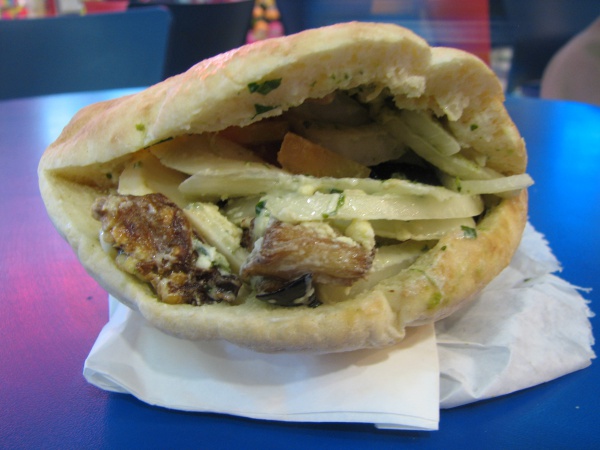Facts About Sabich
Sabich, sometimes spelled sabih, is a cherished Israeli sandwich rooted in a traditional Iraqi Jewish dish. This delectable treat is made with pita or laffa bread and filled with a delightful combination of fried eggplant, hard-boiled eggs, Israeli salad, parsley, amba (a tangy mango chutney), and tahini sauce. It's a breakfast favorite in Israel and is widely available in many eateries throughout the country.
The origins of the name "sabich" remain somewhat enigmatic. One popular theory is that it derives from Sabich Tsvi Halabi, an Iraqi Jewish man who is believed to have introduced the sandwich at his restaurant in Ramat Gan. Another theory suggests the name comes from the Arabic word for "morning" reflecting its breakfast-like ingredients. There is also a whimsical theory proposing that it is an acronym in Hebrew for "salad, egg, more eggplant."
The history of sabich dates back to the 1940s and 1950s when Iraqi Jewish refugees arrived in Israel. They brought with them the components of sabich, which were traditionally eaten cold on the Sabbath. In Israel, these ingredients were creatively combined in a pita, resulting in a convenient and delicious street food option. The first known sale of sabich in Israel was in 1961 at a small stall in Ramat Gan.
The classic ingredients of sabich include fried eggplant slices, hard-boiled eggs, tahini sauce, Israeli salad, parsley, and amba. Sometimes, boiled potatoes are added. There are also variations that feature haminados eggs, which are slow-cooked until they turn brown, and spicy condiments like zhug. For those who prefer a bread-free option, there’s the Sabich salad, which highlights all the components in a fresh salad format.
Sabich exemplifies the fusion of Iraqi and Israeli flavors, offering a portable and satisfying meal that has captured the hearts of many.

 Syria
Syria